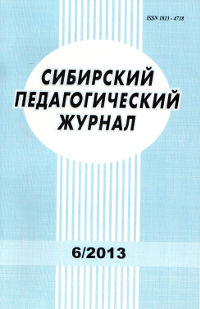Teaching Staff of Novo-Nikolaevsky Teachers’ Institute (1917–1920)
1. Bayandin, V. I., 2022. Novo-Nikolaev Teachers’ Institute (1917–1920). Novosibirsk,271 p. (In Russ.)
2. Novosibirsk City Archives (NGA). F. 142.Op. 1. DD. 2, 3, 6, 7, 10.2. (State Archives of the Novosibirsk Region. (GANO). F. R-1119. Op. 1. D. 73. L. 12, 13 ob, 14, 16, 20, 57.)(In Russ.)
3. Lukin, A. G. State Archives of the Novosibirsk Region (GANO). F. R-1959. Op. 1. D. 99.LL. 4, 6. 7. (In Russ.)
4. Dal, V. I. Explanatory dictionary of the Russian language. Modern version. Moscow, 2000. 712 p. (In Russ.)
5. Rank, E. E. Personal file. Museum of Novosibirsk State Pedagogical University. Op. 2. d. 2. LL. 2, 3, 5, 7. (In Russ.)
6. Opening of the Teachers’ Institute. “Free voice of Siberia”. Novonikolaevsk. 1918. January 27, no. 1, p. 3 (In Russ.)
7. The first Siberian experimental pedagogical college. “Soviet Siberia”. 1921. October 5th,no. 215, pp. 4–6. (In Russ.)
8. Voitekhovskaya, M. P., Kochurina, S. A., comp., 2005. Teachers’ institutes of Western Siberia. 1902–1920. Collection of documents and materials. Tomsk, 350 p. (In Russ.)
9. Shepelev, L. E., 1991. Titles, uniforms, orders in the Russian Empire. Leningrad,224 p. (In Russ.)




